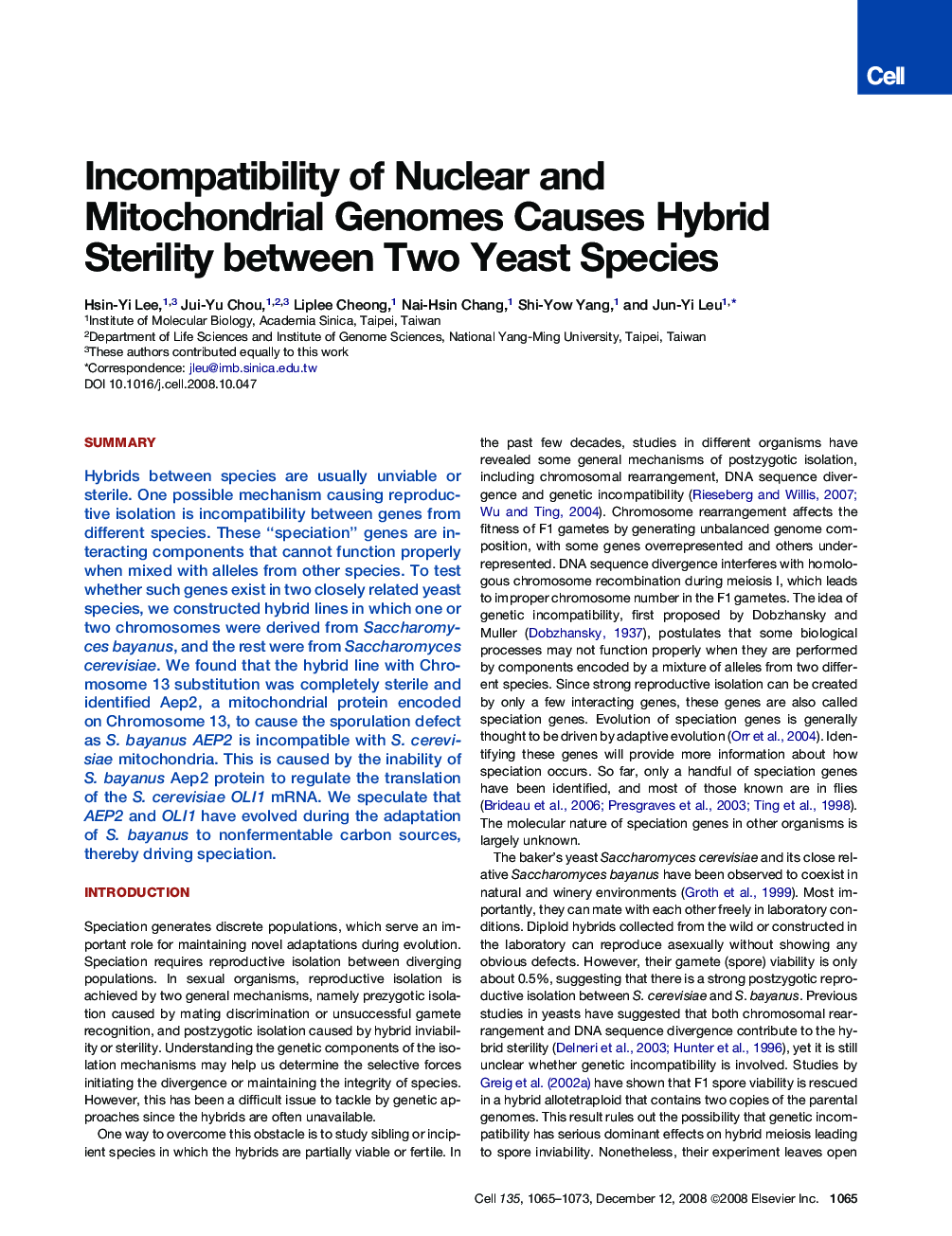| Article ID | Journal | Published Year | Pages | File Type |
|---|---|---|---|---|
| 2036931 | Cell | 2008 | 9 Pages |
SummaryHybrids between species are usually unviable or sterile. One possible mechanism causing reproductive isolation is incompatibility between genes from different species. These “speciation” genes are interacting components that cannot function properly when mixed with alleles from other species. To test whether such genes exist in two closely related yeast species, we constructed hybrid lines in which one or two chromosomes were derived from Saccharomyces bayanus, and the rest were from Saccharomyces cerevisiae. We found that the hybrid line with Chromosome 13 substitution was completely sterile and identified Aep2, a mitochondrial protein encoded on Chromosome 13, to cause the sporulation defect as S. bayanus AEP2 is incompatible with S. cerevisiae mitochondria. This is caused by the inability of S. bayanus Aep2 protein to regulate the translation of the S. cerevisiae OLI1 mRNA. We speculate that AEP2 and OLI1 have evolved during the adaptation of S. bayanus to nonfermentable carbon sources, thereby driving speciation.
